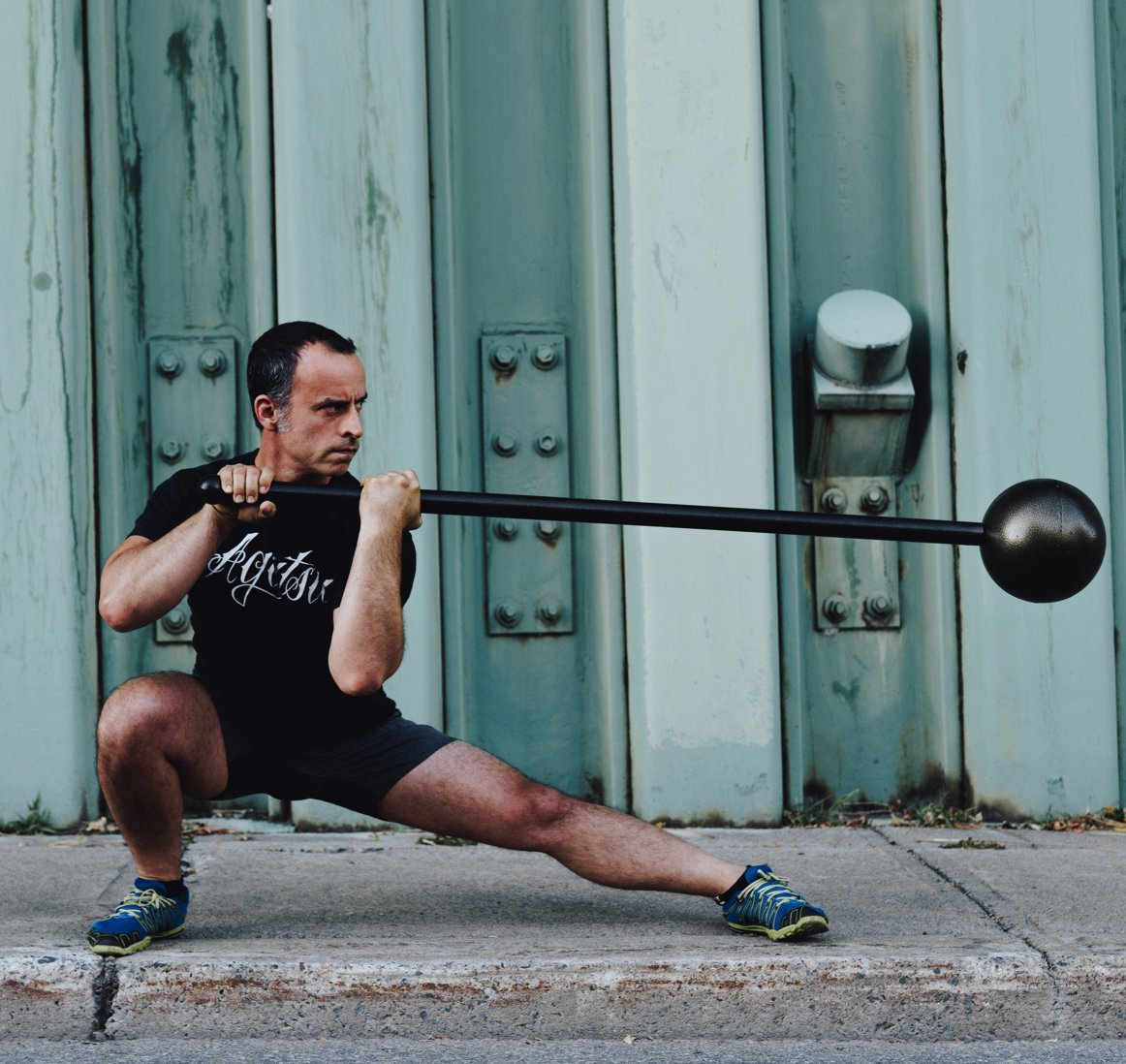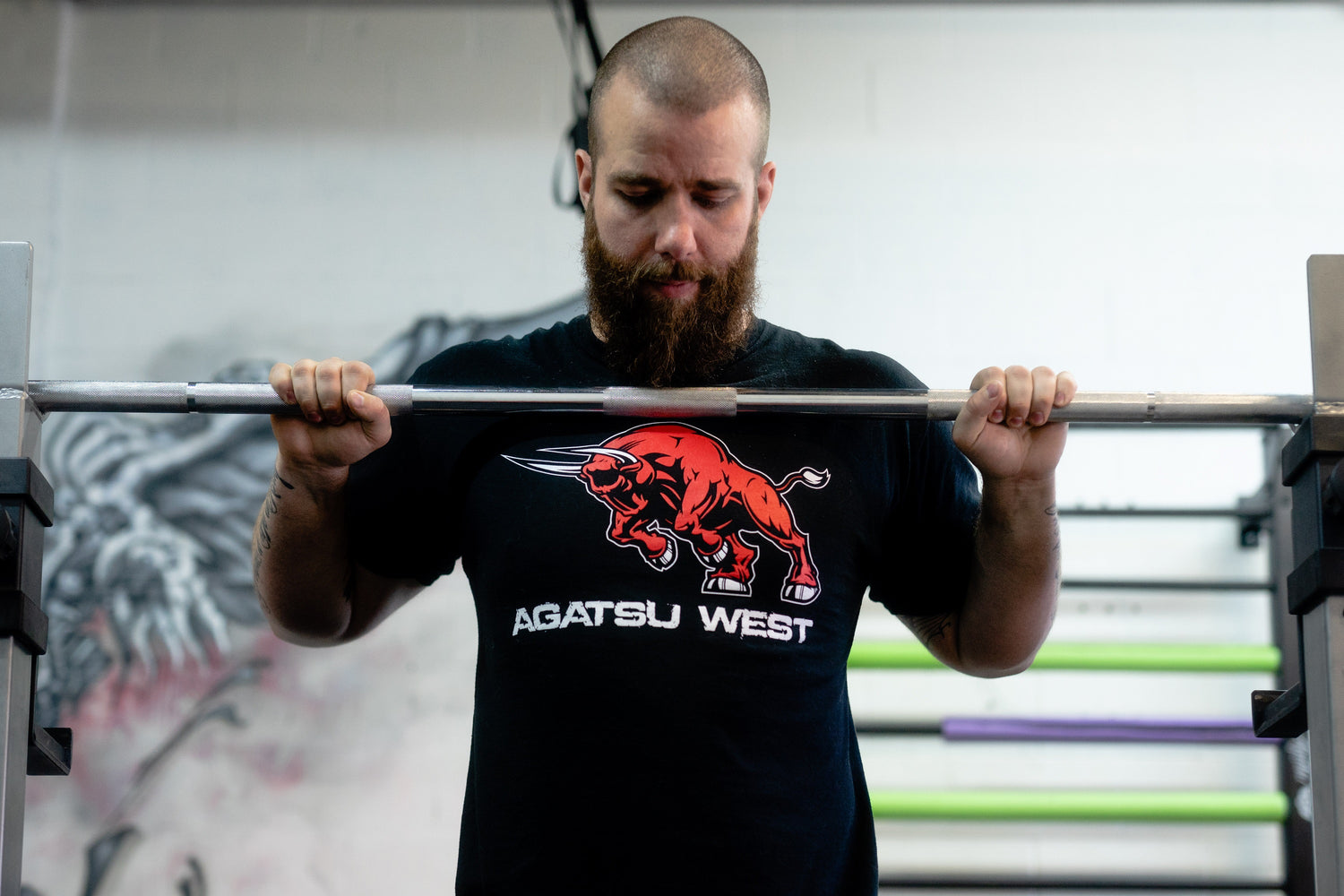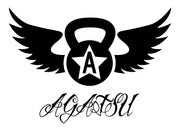Kettlebell Jerk & Long Cycle Training + Programming Bonus
The Kettlebell Jerk is an outstanding and valuable exercise for developing strength/endurance. A classical Kettlebell lift this movement is contested in Kettlebell Sport competitions and its value extends well beyond sport training. The Jerk is an exceptional training tool as it allows you access to heavy weights that you may otherwise be unable to press or even push press. Working on your Jerk technique will make you stronger and ultimately aid in your goal to press and support more weight.
Before you begin with the lessons on this page be sure to watch the following video and make sure you have all the equipment you need for your training.
In the first two demos we will look at the bump and the value of the Jerk as a training tool. I will demo first with two Kettlebells however you will begin your training with one as instructed in the video. Once you get the hang of the Jerk you can work with two weights when appropriate. As you begin your training pay careful attention to the rack position and begin each of your training sessions by practicing the bump. Remember to warm up adequately before picking up and using your Kettlebells. Once you are warmed up and ready do 3 X 10 sets of bumps. Begin with a light Kettlebell and follow with two other heavier weights if possible. For example you may begin with 1 set of 10 bumps at 12KG followed by 1 set of 10 bumps at 16KG and end with a final set at 18KG. Bumps are part of your warmup but also an essential part of the Jerk and the Long Cycle. (Long Cycle involves performing a clean before each Jerk and will be covered in the videos in this section.
Once you are comforatable with the lessons from the above video its time to work on your second dip. Remember this mantra-down,up,down,up. The second dip is the key to getting a heavy weight overhead. You aren't "pressing" this weight but rather falling under it while you quickly extend your arm. Timing both dips and staying relaxed takes time. Be patient with your training and great things will come. Be sue to use an appropriate weight, one that gives you enough feedback to help force the second dip but not so heavy that you have a hard time practicing. If you go too light you may find yourself pressing or push pressing the weight.
While practicing the second dip its common to make your movements too large or excessive. Large jumping motions or over doing the heel slam will needlessly burn energy. Try to be minimalist in your movement. Do nothing that is of no use.
Practice, practice, practice but make sure you are practicing the "right" thing! Check out this video and ask yourself "am I doing this?"
Once you are comfortable with the Jerk you can begin adding in a clean to each movement. The Clean and Jerk otherwise known as Cycle or Long Cycle is an excellent strength endurance builder. The addition of the Clean will test your basics and challenge your grip. Begin your Long Cycle training by following the instructions in the video below. Pay careful attention to the suggested breathing pattern and remember to stay relaxed.
Before you perform many reps of Long Cycle training be sure to establish a comfortable but efficient distance for your legs. Too wide may cost you and too narrow and you could find a Kettlebell hitting your legs. Watch this video for suggestions on the width of your legs and some other useful tips.
As you work on your Long Cycle technique the following tips will help you become more efficient in this movement and help to increase your training volume. No matter how good a technical tip is you should not add too much too soon. Little things like head movement can make a big difference if you are comfortable with the basic technique however they can confuse and impede progress if taken on too soon. Always return to the basic movement and make sure it is well established before you add anything that may help to finesse things.
At first most of your work should be dedicated to cleaning up your technique. Think of your training sessions as practice sessions, in fact you should always approach training this way. Grab those Kettlebells and go practice. As your technique improves so will your volume. Increasing you capacity will take time. The more time you spend mindfully under the Kettlebells the greater returns you will get back. Here you will find a link to a sample Long Cycle training program. This is simply meant as a guide for you to gain a deeper understanding of a possible way to approach your training it is by no means a dogmatic approach that should be looked at as Gospel. There are many ways to train, experiment with the sets and prescriptions given in this guide as well as the supplemental training videos you will find at the bottom of this page. If you are interested in custom training programs contact our offices with subject heading "Online Training" and let us know what you are looking for.
The following sample program is for someone working toward increasing their volume with a 55lbs Kettlebell. You can adjust the sugested weights as is appropriate to your level. This is a two week program with four training sessions per week. This is only an example of the type of training that can increase your Long Cycle volume it is NOT dogma. Before every session you should warm up and include bump sets with three weights if possible. For example after you have done your warmup you may perform 10 reps of bumps with 12KG, 16KG, and 20KG Kettlebells. Sessions should end with circuit training or a quick paced run. For circuit ideas you can check out the Kettlebell workouts here. Only rest 1-3 minutes max between sets.
Week 1:
Day 1: KB weight 20KG four sets of 1 minute. Set 1 do 8 reps, Set 2 do 10 reps, Set 3 do 8 reps, Set 4 do 10 reps. Rest only 1-2 minutes between sets.
End your training with a 30 minute circuit.
Day 2:KB weight 20KG. 1 set of Max Clean and Jerk. Set a pace of 8 to 10 reps per minute. Rest after your set as needed and then run 5-7K
Day 3:KB weight 20KG 1 set of 1 minute and 15 seconds 12 reps. Rest for 1-2 minutes and begin second set with 24KG Kettlebells as 1 minute and 15 seconds only 10 reps for this set. (9 reps for the first minute and then the two remaining reps performed during the last 15seconds)
End your training with a 30 minute circuit and static rack holds. 24KG 1 minute hold. Rest 1 minute and then hold again for a minute. (2 sets) Following the static rack holds you should perform 2 sets of fixation holds.
Day 4:KB weight 20KG. 1 set of 2 minutes 9 reps per minute. Rest for 1-2 minutes. Second set 24KG Kettlebells 1 set of 2 minutes 8 reps per minute.
End your training with a 30 minute circuit and static rack holds. 24KG 1 minute hold. Rest 1 minute and then hold again for a minute. (2 sets) Following the static rack holds you should perform 2 sets of fixation holds with 16KG Kettlebells.
Week 2:
Day 1: KB weight 16KG 1 set of 5 minutes, 9 reps per minute.
End your training with a 30 minute circuit and static rack holds. 24KG 1 minute hold. Rest 1 minute and then hold again for a minute. (2 sets) Following the static rack holds you should perform 2 sets of fixation holds with 16KG Kettlebells.
Day 2: KB weight 20KG six sets of 1 minute each with a 1 minute rest between sets. Your goal pace for each minute is 8 reps per minute.
Run 6-8km.
Day 3: KB weight 20KG 1 minute 15 seconds 12 reps. Second set 24KG 1 minute 15 seconds 11 reps. Third set 16KG 3 minutes and 30 seconds. For the last set your goal pace is ten reps per minute and five reps in the last 30 seconds.
End your training with a 30 minute circuit and static rack holds. 24KG 1 minute hold. Rest 1 minute and then hold again for a minute. (2 sets) Following the static rack holds you should perform 2 sets of fixation holds with 16KG Kettlebells.
Finish with a circuit workout.
Day 4: KB weight 20KG 2 minute set at 9 reps per minute. Rest 2-3 minutes. Second set 24KG 2 minute set at 8 reps per minute.
End your training with a 30 minute circuit and static rack holds. 24KG 1 minute hold. Rest 1 minute and then hold again for a minute. (2 sets) Following the static rack holds you should perform 2 sets of fixation holds with 16KG Kettlebells.
Finish with a circuit workout.
While training long cycle you may tear callouses. This is particularly common as you move up in weight. As your technique improves this will happen less and less. Proper hand care is essential to avoid long breaks in training. Use hand care tools to keep your callouses low and if you are looking for a product to maintain and repair your hands we suggest the following:
SUPPLEMENTAL EXERCISES
The following supplemental exercises will help you develop your Jerk and or Long Cycle Technique. You can add them in to your weekly training.




